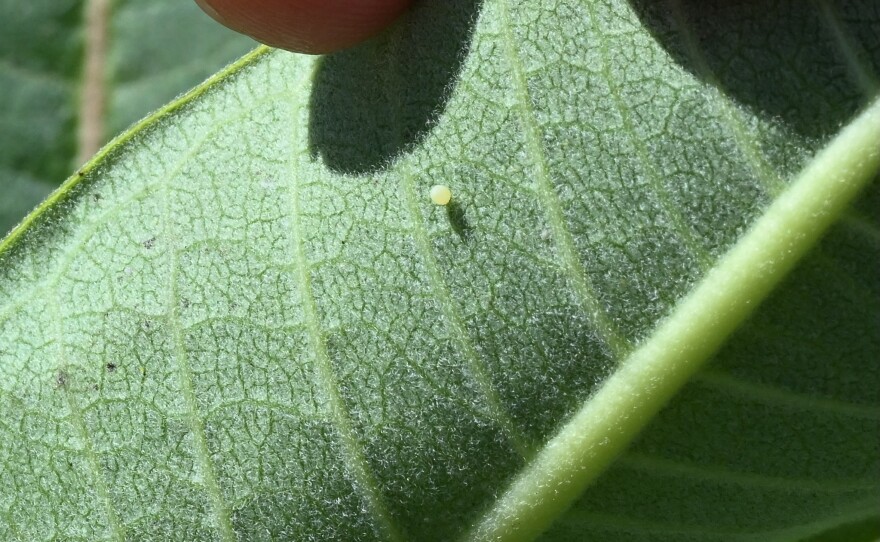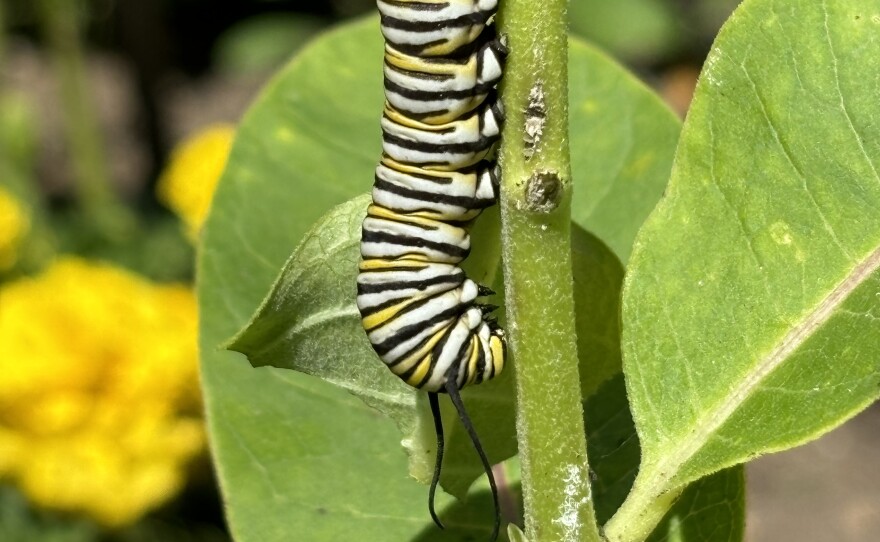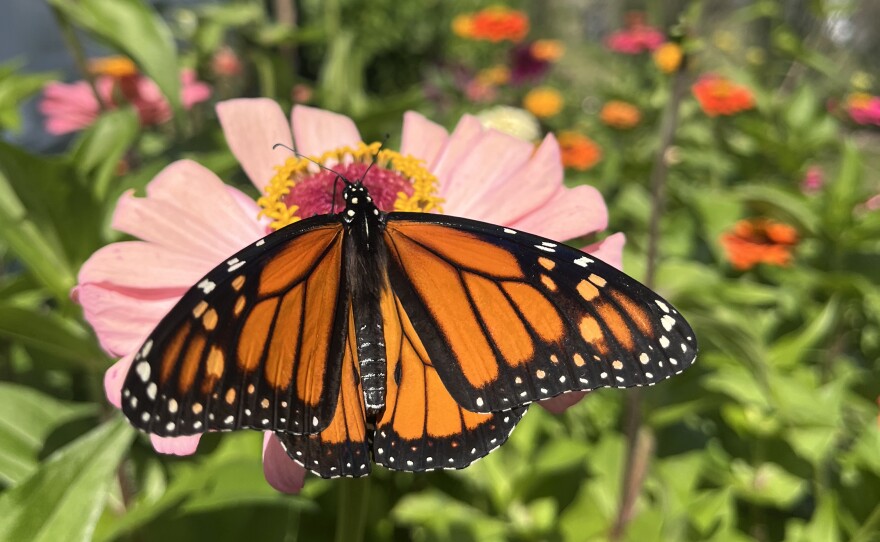Monarch butterfly populations have nearly doubled this year, an annual survey of the species found.
At the end of each summer, the beloved pollinators migrate from southern Canada and the northern and central United States to mountain tops in Mexico — some traveling up to 3,000 miles.
A survey by the World Wildlife Foundation measures the area covered by monarchs in their winter grounds and compares it to data recorded in previous years. This year’s survey found the eastern monarch butterfly population covered 4.42 acres, up from 2.22 acres during the 2023-2024 season.
“What we think probably happened is that the fall migration was better,” says Karen Oberhauser, the co-founder and co-director of the Monarch Larva Monitoring Project. “The numbers in the Upper Midwest, where we are, were pretty similar between the summer of 2023 and the summer of 2024, but monarchs probably had a more successful fall migration. The weather conditions as they were migrating to Mexico were better, so the population size went up in Mexico.”
Although it’s welcome news, Oberhauser says it’s still the fifth-lowest number of monarchs on record. She says habitat loss, climate change and the use of pesticides are to blame for the population decline of monarchs.
Lake Effect’s Xcaret Nuñez spoke with Oberhauser to learn how monarchs are doing in Wisconsin this summer and ways people can help conserve them.
This interview has been edited for length and clarity.
The Monarch Larva Monitoring Project is a community science project based at the UW-Madison Arboretum. Can you tell me more about the work that it does?
We have volunteers all over the monarch's breeding range — which includes parts of Canada, most of the United States and northern Mexico — and volunteers go out once a week and look at a local milkweed patch. It can be in their yard, a nature center or a pristine prairie somewhere. And they look at as many milkweed plants as they have time for, and they keep track of how many monarch eggs and caterpillars they see on these plants. So with their data, we can see how the population is doing throughout the course of the breeding season, and we can also measure things like survival.
So we look at the absolute numbers of eggs that are being laid, which is a measure of the size of the adult population, but we can also look at survival through the egg and larval period of the life cycle. So we get really good, real-time data on how the population is doing in the summer. And some of our volunteers collect some of the larvae that they find, and they bring them into their homes and rear them. And from that, we can measure parasitism rates and survival in more detail than we can by just recording what the volunteers are seeing outside. But most of our volunteers only look at the plants and count the eggs and caterpillars.
What are some of the factors that have hurt monarch populations over the years, and the threats that they continue to face?
There are a lot of different things that are threatening monarchs, and they're the same things that are threatening other insects in general. The biggest one is probably habitat loss. The vast majority of the central part of the United States was prairie, and that was perfect monarch habitat, so there was a lot of habitat available to them. And then with the encroachment of settlers and people coming and taking all that prime prairie land and turning it into farmland, we lost a lot of habitat, and now that's continuing with urban sprawl.
So habitat loss is a really big driving factor, but monarchs and other insects are also really tightly tied to weather. And we know that weather conditions are changing with climate change. And what we're finding is that the conditions that are currently more prevalent and that are predicted to become even more prevalent, hot, dry conditions followed by sometimes really intense periods of rain instead of kind of leveled out over the course of a summer. Those are hard for monarchs, so weather extremes [are another factor].
And probably the other biggest thing is pesticide use. For instance, when there's insect control in a yard, maybe to control mosquitoes, that is a general insecticide that's being sprayed. So it will kill all insects, including monarchs and butterflies, and beneficial insects, the ones that might be eating the mosquitoes. So there's residential and then broad-scale pesticide use for agriculture. So those are probably the three biggest drivers: climate change, habitat loss and pesticide use, specifically insecticide use.
I've recently seen a few nature centers in the Milwaukee area report that community science volunteers have noticed an increase in monarch sightings. But I'm curious, what have you been seeing in Wisconsin so far this year?
Well, it's a little early to see. It felt like I was hearing from a lot of people, and what I was seeing, was that the first generation did not seem very big. We didn't see a lot in terms of butterflies or their eggs, and caterpillars in the first generation. So numbers were a little low, not that much lower than the last couple of years, and we don't have all the data in yet, but they were either the same or slightly lower than they had been the last couple of years.
But right now, we're starting to get an uptick again. So if people right now are feeling like they're seeing more monarchs, it's because they're starting to see that new generation. So I would predict that they'll see more and more through kind of the third week in July. The population will be increasing, and then the numbers will start going back down as those adults die off, and before we get the migratory generation. So we are on an increase right now. So if people are seeing that, that's great. That means they're out in the natural world and making observations.
What does an ideal habitat for monarchs look like?
I love that question because it can look like a lot of different things. It needs the basics. It needs flowers to provide nectar for the adults, because the adults have a relatively long life for an insect — they live four to six weeks — so they need to eat flowers. It needs milkweed, because that's all that the caterpillars can eat. And the female monarchs lay their eggs on milkweed plants… and we have 12 species of milkweed that are native in Wisconsin, so it doesn't have to just be common milkweed. Then the other things are no pesticides. So there can't be any insecticide use in the habitat.
So, a great monarch habitat could look like: A container garden. It can look like a small backyard garden — maybe a 10-foot by 10-foot garden, as long as it has those components — or it can be a 40-acre prairie, it can be a roadside, or the right of way on a railroad track. So it can be anything in between there, and as long as it has those basic conditions of plant availability for the adults and caterpillars and no pesticide use… so people can help monarchs with a relatively small amount of space, monarchs are just fine in your city yard, or even your container garden.
You can visit the Monarch Larva Monitoring Project website to learn more about the community science project and how to participate in collecting data on monarch butterflies.
_









